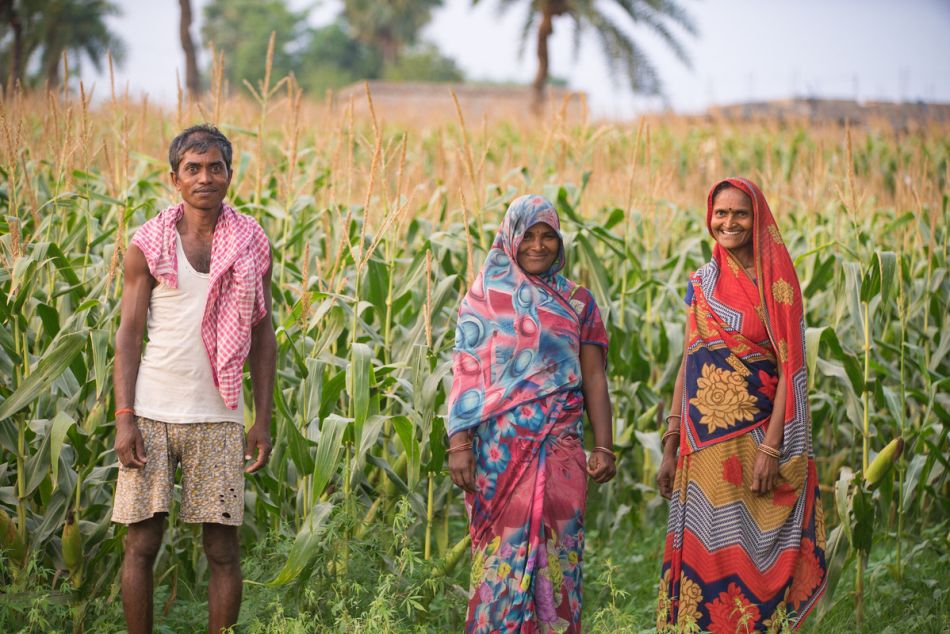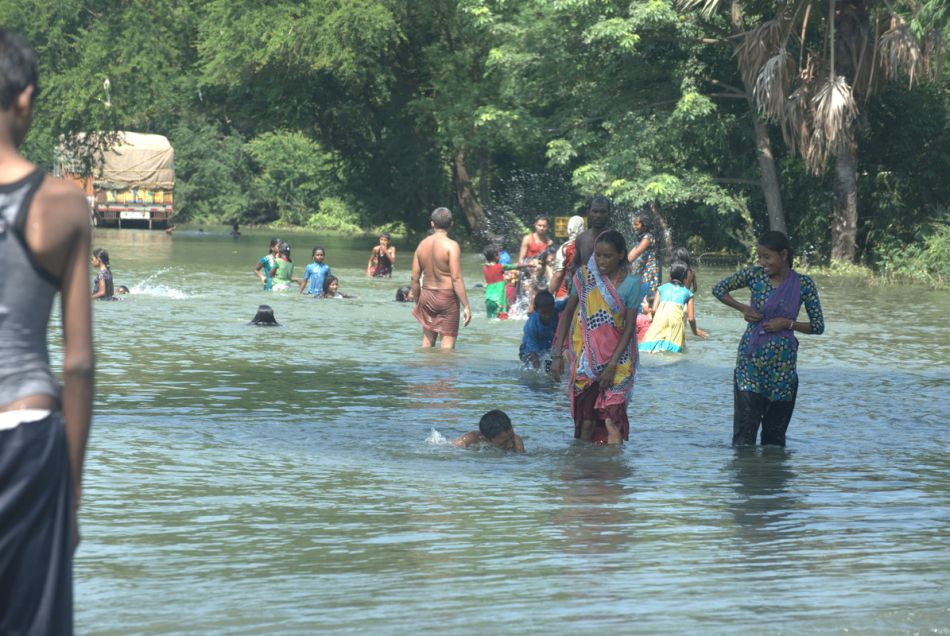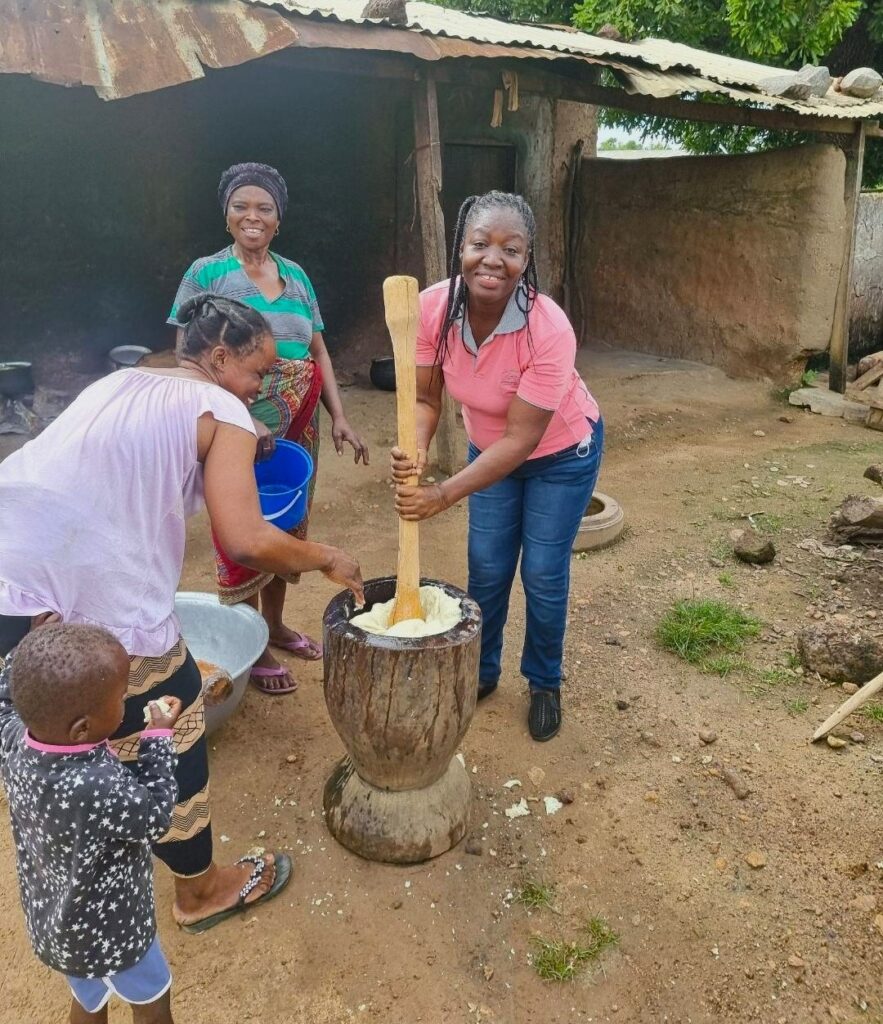Giriraj Amarnath, Principal Researcher – Disaster Risk Management and Climate Resilience, International Water Management Institute

Floods, storms and droughts dominate the list of disasters that have occurred globally in the last 50 years. Between 1970 and 2019, weather, climate and water hazards accounted for 50% of all disasters, 45% of reported deaths and 74% of all reported economic losses. With climate change increasing risk from water-related hazards, it is imperative to find ways to help people – particularly poor and vulnerable communities – adapt and become more resilient. Insuring smallholder farmers against losses from failed harvests due to floods or droughts provides one way to do this.
Scientists at the International Water Management Institute (IWMI) used satellite technology to develop a low-cost Index-Based Flood Insurance (IBFI) to cover farmers against risk from floods. By analysing historic and contemporary remotely sensed data on locations, depths and durations of floods, they were able to map risk levels and accurately assess claims for crop losses from inundation. No longer having to make costly field visits to validate claims meant they could keep premiums affordable, even to the poorest farmers. The challenge now is how to make such insurance products more widely available.
IWMI’s latest publication, Scaling up Index-based Flood Insurance (IBFI) for agricultural resilience and flood-proofing livelihoods in developing countries, provides a framework for a business model for IBFI – or similar product. It outlines the activities, mechanisms and relationships required for (1) providing a good product or service and then (2) selling that product or service. According to the authors, these two modules – aimed at ‘creating value’ and ‘capturing value’ – are equally important for the business to succeed, and must continually provide feedback on model performance over time, to inform improvements to product design and marketing.
“We assessed ten organizations’ experiences of implementing agricultural insurance products around the world – from micro-scale insurance to safeguard crops from drought in Malawi to macro-scale index-based livestock insurance in Mongolia,” explains Avinandan Taron, an IWMI researcher. “From these case studies, we concluded that a public-private partnership – PPI – represents the most effective way to develop, market and scale-up an IBFI product. However, different types of PPI – with differing stakeholders and partnership arrangements – are needed to fulfil the separate product development and marketing functions.”
Collaboration between government departments
The findings show that developing a robust satellite-based farming insurance product requires collaboration between government departments responsible for agricultural insurance, research institutes and academics, weather information providers, disaster-management authorities, space-research organizations, insurance companies and reinsurers – plus farmers likely to be affected by weather shocks. Successfully selling the insurance, meanwhile, demands an appropriate marketing strategy and partnerships between: grassroots organizations, such as rural cooperatives and self-help groups with experience of working with farmers; Micro Financial Institutions; and government agencies that can provide financial support and potentially oversee implementation of the insurance program.

Findings from IWMI’s trials of its own IBFI motivated the new report. When the insurance was put to the test during the 2017 and 2018 monsoon seasons in Bihar, India’s most flood-prone state, the results indicated that making such insurance schemes available across large rural areas could help bolster farming livelihoods, reduce post-disaster costs for governments and contribute to reducing poverty, achieving gender equality and safeguarding food security. Between 2017 and 2019, the IBFI scheme supported insurance payouts in India (USD 22,000) and Bangladesh (USD 31,500) to 1,306 out of 2,300 eligible farming households, helping to increase their resilience to floods and minimize their vulnerability to natural hazards.
Boosting penetration rates for agricultural cover
Despite the clear benefits to farmers of receiving insurance, however, penetration rates for agricultural cover remain low. The authors of the Scaling up report identify four actions that can help to overcome this challenge. These are: developing an effective communications strategy and disseminating information about insurance schemes and their benefits in accessible ways; ensuring transparency in insurance contracts, and improving procedures for estimating losses, calculating fair compensation, and making timely payouts; strengthening grievance redressal mechanisms; and providing greater financial support at government level, including subsidies to cover insurance premiums.
Efforts to scale up IWMI’s IBFI are currently under way. For example, after a trial with IWMI, Indian company Weather Risk Management Services (WRMS) is aiming to insure 25,000 farmers in India in the next 12 months. The trial provided IBFI, along with moisture-tolerant seeds and weather advice, in a two-pronged approach to reducing farmers’ risk from flooding. Using the seeds enabled some farmers to still achieve a successful harvest even when rainfall was abnormally
heavy or prolonged. And those whose crops were destroyed were able to claim on the insurance. Meanwhile, in Bangladesh, following successful trials of IBFI with IWMI in 2019 and 2020, Green Delta Insurance Company is scaling up its weather-based insurance offerings to cover 100,000 farmers by the end of 2022.
A viable business model
“Trials of our own IBFI product have demonstrated that insurance can help smallholders and their families cope better when faced with water-related hazards, and our Scaling up report lays out a viable business-model framework for making such satellite-based insurance products more widely available,” says Ravinder Malik, IWMI Emeritus scientist. “As climate change progresses, insuring millions of farmers against risk from weather shocks offers a means to support food security and reduce nations’ economic losses.”
The report will be shared during the UN ESCAP Third Disaster Resilience Week.
















